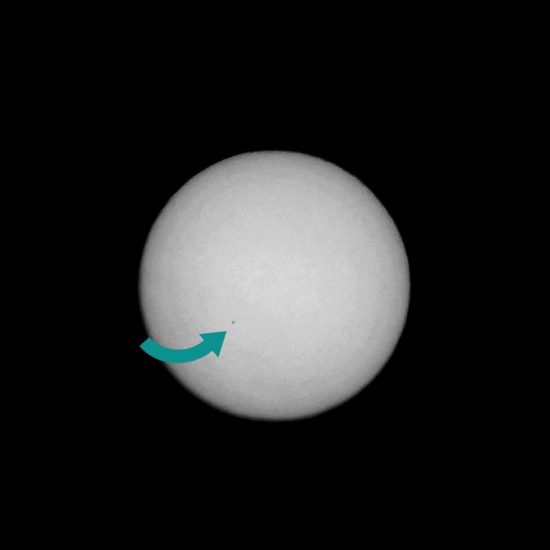
Mercury passing in front of the sun.
We have planetary news — and, for a change, it’s not bad. It’s brought to you by three WSR readers, who emailed us Monday morning.
“Good morning, West Side Rag,” wrote Elizabeth and Wilke See-Tho, from outside Lincoln Center. “Like many around the world, we are following today’s Transit of Mercury. The Transit of Mercury is the rare occasion when Mercury appears to pass directly in front of the sun. It is visible from Earth about 13 times in a century. Those of us on the east coast of North America are well positioned to watch today’s entire transit, with Mercury making first ‘contact’ with the sun at 7:36 a.m. and exiting at 1:06 p.m. The next chance to observe a Transit of Mercury will be on November 13, 2032, with best viewing in Europe and Africa; the next one visible from New York City will be on May 7, 2049. The image (above) was taken at Lincoln Center, using a DSLR camera with an attached solar filter.”
On West 93rd Street and Central Park West, another group was gazing toward the heavens, trying to catch a glimpse of Mercury’s slow path across the sun. David Brotsky wrote an account:
While taking a walk towards Central Park early Monday morning, I spied a group of children and adults clustered together with some looking at the sky. As I got closer, I saw a sign saying, “Playing Now: Transit of Mercury,” and people looking into a telescope.
It turns out that this was a public showing of the “Transit of Mercury,” being held by a local astronomy group led by Ilya Yashin, a science teacher at Columbia Grammar and Preparatory School. Ilya and others go out monthly to Central Park on clear nights, with telescopes and binoculars in hand, to view the stars and other astronomy phenomena.
Adults and children lined up along West 93rd Street as they realized they had a rare chance to see the Transit of Mercury. As they patiently waited, you heard teachers who had brought their classes, as well as adults and other children talking among themselves. Interspersed were Ilya and his helpers saying, “You see all that yellow? Do you see that tiny black dot? That’s Mercury!” — as viewers exclaimed things like, “Wow,” “Oh yes!” and “Oh my G-d, that’s so cool,” when the small dot that is Mercury came into their view.
For those interested in Ilya’s astronomy group, you can reach him directly at iyashin@cgps.org and ask to be added to his group.
The top photograph was taken by Elizabeth and Wilke See-Tho. The bottom two photographs were taken by David Brotsky.
Finally, to all commenters who are preparing to ask why we didn’t tell you BEFORE the event, the answer is…we didn’t know about it.



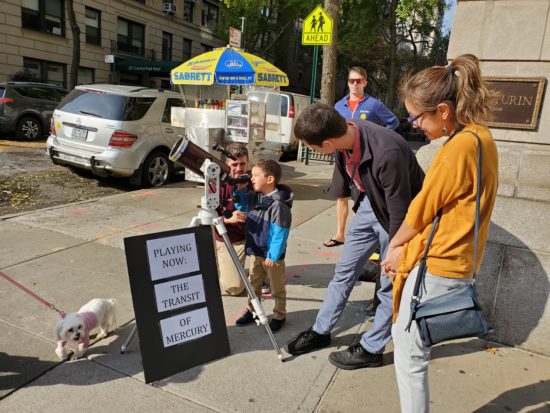





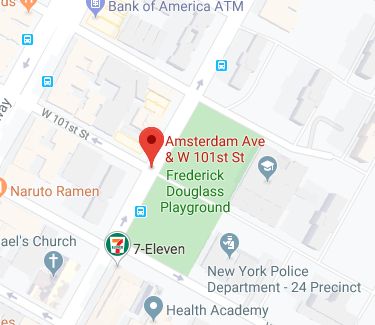
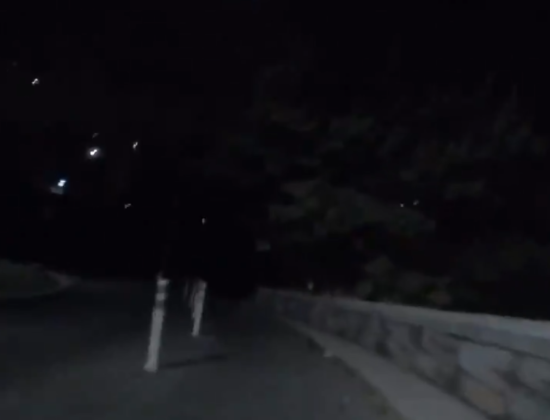
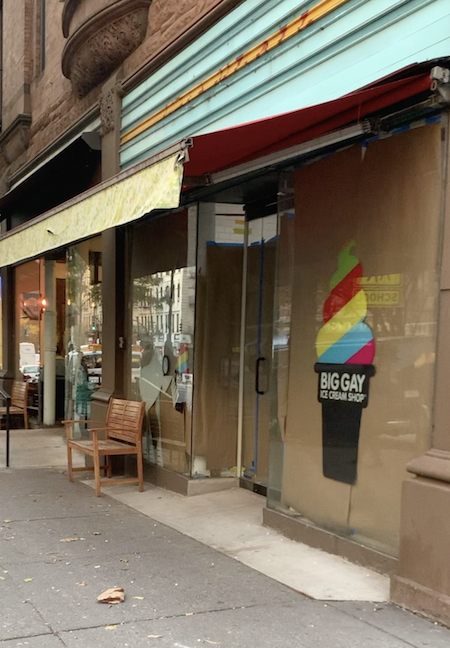
Thanks for sharing. That photo is so cool…to see the sun stripped of all its fire for which we cannot look at it, turned into a simple white ball….and Mercury a little spec. Reminds me of my half-hour visits to the AMNH space halls…I can only take about a half hour at a time because reading about the origins and evolution of the Earth and the universe it floats in blows my mind.
Love it!